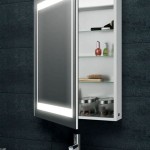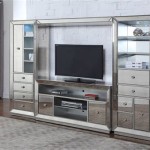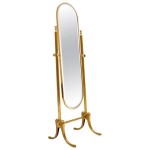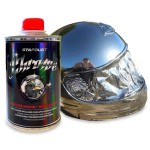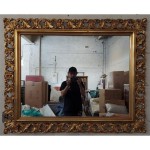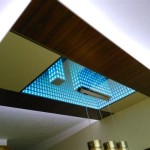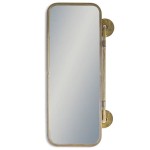How To Frame a Large Bathroom Mirror
Framing a large bathroom mirror can significantly elevate the aesthetic of the space, transforming a simple functional element into a stylish focal point. While the task might seem daunting, with the right tools and approach, it can be accomplished effectively and efficiently. This guide provides a comprehensive overview of the process.
Planning and Preparation: The Foundation of a Successful Project
Before beginning any hands-on work, careful planning is crucial. Accurate measurements of the mirror are essential. Using a tape measure, record the height and width, double-checking for accuracy. These measurements will determine the dimensions of the frame.
Choosing the right frame material is the next important step. Various options exist, including wood, metal, and composite materials. Consider the bathroom's existing décor and desired aesthetic when making this selection. Wood offers a classic and versatile look, while metal can provide a more modern or industrial feel. Composites offer durability and moisture resistance, a significant advantage in a bathroom environment.
Gathering the Necessary Tools and Materials
Once the planning phase is complete, gather all the necessary tools and materials. This proactive approach streamlines the framing process and avoids interruptions. Essential tools typically include a miter saw (for angled cuts), a measuring tape, a level, safety glasses, a drill, and appropriate drill bits. Materials will include the chosen frame material, adhesive suitable for bathroom environments, finishing nails, and wood filler (if using wood).
Constructing the Frame: A Step-by-Step Guide
Construction of the frame begins with cutting the frame material. Using the previously recorded measurements and the miter saw, cut the pieces at a 45-degree angle. These angled cuts allow the frame pieces to fit together seamlessly at the corners. Precision during this step is vital for a professional-looking finished product.
After cutting, dry-fit the frame pieces around the mirror to ensure a proper fit. Adjustments can be made at this stage if necessary. Once the fit is confirmed, apply adhesive to the joining edges of the frame pieces. Join the pieces together, ensuring tight corners and a secure bond. Use finishing nails to further reinforce the frame structure. Countersink the nails and fill the holes with wood filler if using wood, creating a smooth surface.
Mounting the Frame: Secure and Stable Attachment
Before mounting the frame, allow the adhesive to dry completely according to the manufacturer's instructions. This ensures a strong and lasting bond. Several mounting methods are available, including using adhesive directly on the mirror, utilizing J-channels or clips, or employing a combination of techniques. The chosen method will depend on the weight of the frame and the type of wall surface.
If using adhesive, apply it to the back of the frame in a consistent pattern. Carefully position the frame over the mirror, ensuring proper alignment. Apply even pressure to the frame to secure the bond. For J-channels or clips, attach them to the wall or the back of the frame before positioning the frame over the mirror.
Finishing Touches: Enhancing the Frame's Appearance
Once the frame is securely mounted, apply finishing touches to enhance its appearance and protect it from the bathroom's humid environment. If using wood, sanding any rough edges creates a smooth, polished surface. Applying a sealant or varnish provides protection against moisture and enhances the wood's natural beauty. For metal frames, a protective coating can prevent rust and corrosion.
Considerations for Different Frame Materials
Different frame materials require specific considerations during the framing process. Wood, for example, may require pre-treatment to prevent moisture damage. Metal frames might necessitate specialized cutting tools. Understanding these material-specific requirements ensures a successful and long-lasting framing project.
Maintaining the Framed Mirror
Regular cleaning and maintenance will preserve the framed mirror's appearance and extend its lifespan. Wipe down the frame with a damp cloth and mild cleaner as needed. Avoid abrasive cleaners that can scratch the surface. Regularly inspect the frame for any signs of damage or wear and address them promptly to prevent further deterioration.
Safety Precautions
Throughout the entire process, prioritize safety. Wear appropriate safety glasses when using power tools. Ensure adequate ventilation when working with adhesives or sealants. Follow all manufacturer instructions for tools and materials to minimize risks and ensure a safe working environment.

How To Frame A Mirror

How To Frame A Bathroom Mirror Mirrors Diy Large Makeover

Unique Or Large Bathroom Mirrors Mirrorchic

Remodelaholic Framing A Large Bathroom Mirror Makeover Mirrors

How To Frame Out That Builder Basic Bathroom Mirror For 20 Or Less

How To Frame Out That Builder Basic Bathroom Mirror For 20 Or Less

Diy Bathroom Mirror Frame For Under 10 O Hayley Blog

Diy Bathroom Mirror Frame For Under 10 O Hayley Blog

Diy Mirror Frame Remodelaholic
How To Upgrade Your Builder Grade Mirror Frame It

